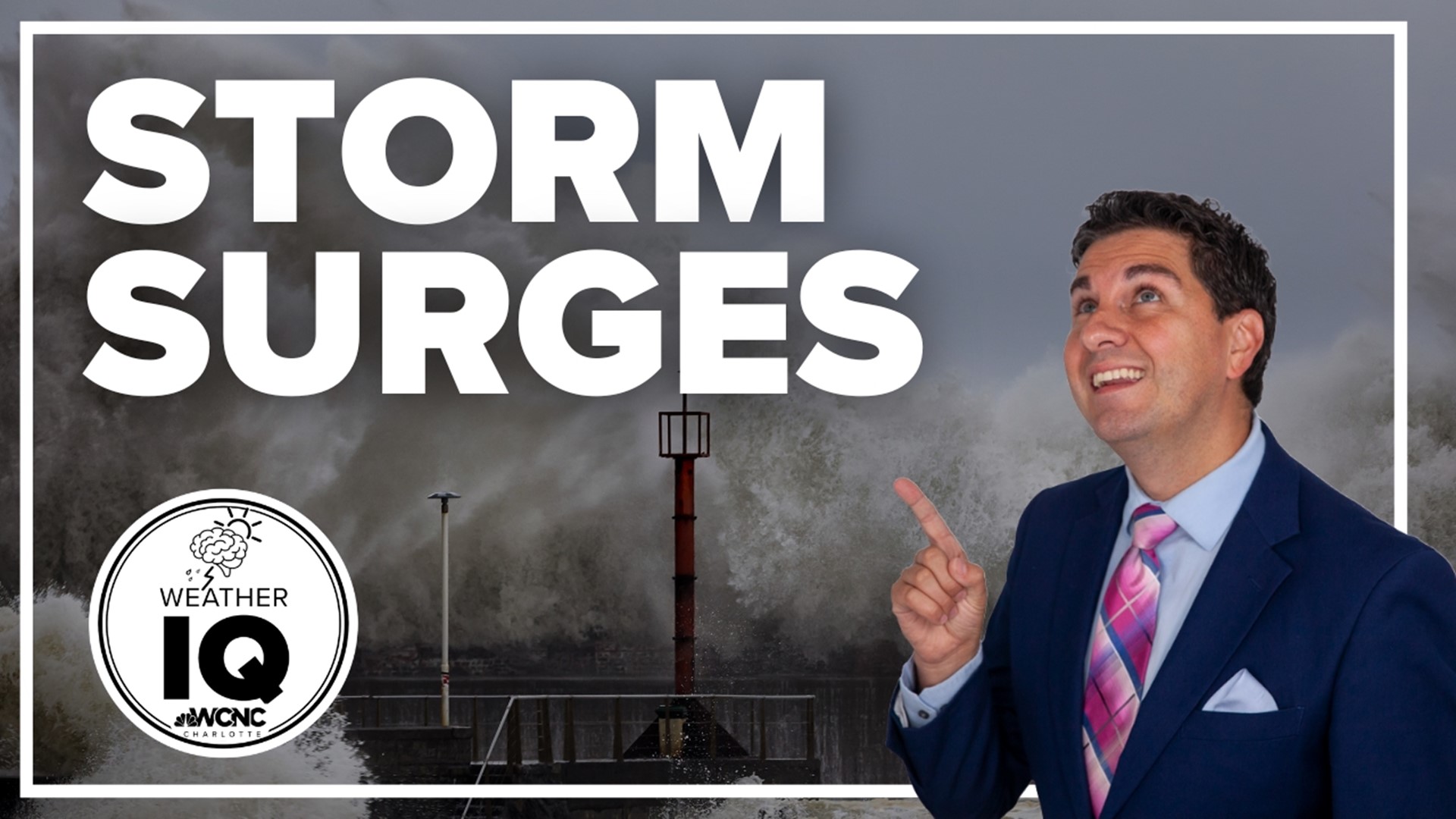CHARLOTTE, N.C. — On Set 28, 2022, Hurricane Ian slammed Florida with strong category 4 winds (up to 150 mph) and a catastrophic storm surge of up to 12 feet. Here is what you need to know about storm surges and their impacts.
A hurricane's most lethal weapon
Hurricanes bring an arsenal of dangerous weather when they make landfall. Flash flooding, high winds, rip currents and tornadoes are among those, but it's often the storm surge that is most deadly and destructive.
Simply put, storm surge is the rise in the sea level during a storm. Specifically from a low-pressure system like a hurricane.
When a hurricane is about to make landfall, the National Weather Service will issue one of these storm surge maps showing what the forecasted storm surge will be. Below is an example from before Ian's landfall.
This is measured as the height of the water above the normal predicted astronomical tide.
How it happens
In the center of a hurricane, as the pressure drops, the sea level rises. This water piles up and is pushed toward the coast and as the hurricane makes landfall it eventually moves inland.
This is the most life-threatening part of the storm and why people are mandated to evacuate near the coast.
Sometimes a hurricane can pull water AWAY from the shoreline (See below).
Yes, water was ‘sucked out’ of Tampa Bay by Hurricane Ian in phenomenon called ‘reverse storm surge’
Storm surge impacts
It only takes a few inches of rising water to knock out the power and six inches of moving water to knock you off your feet.
Once water levels reach up to three feet, it is too late to evacuate. This is enough to cause cars to float. This much water will completely flood out the first floor of homes and businesses, forcing those who stayed to rush to higher ground.
At six feet, cars are easily floating along with other large objects. This can cause further damage acting like battering rams. Where the heavy waves themselves increase the damage as well.
And up to nine feet and above ... the water is up to the ceiling in homes splashing up to the roof of single-story houses.
Storm surge records have reached much higher than nine feet.
Historic storm surge records
The highest storm surge in the Carolinas came from Hurricane Hugo, peaking at an estimated 19.8 feet at Romain Retreat, South Carolina.
Hurricane Katrina produced the highest storm surge in recorded U.S. history, estimated to reach 27.8 feet in Southern Mississippi.
And globally, the highest storm surge ever reported was in northern Australia in 1899, with estimates over 40 feet.
anywhere.
Wake Up Charlotte To Go is a daily news and weather podcast you can listen to so you can start your day with the team at Wake Up Charlotte.
SUBSCRIBE: Apple Podcasts || Spotify || Stitcher || TuneIn || Google Podcasts
All of WCNC Charlotte's podcasts are free and available for both streaming and download. You can listen now on Android, iPhone, Amazon, and other internet-connected devices. Join us from North Carolina, South Carolina, or on the go anywhere.

